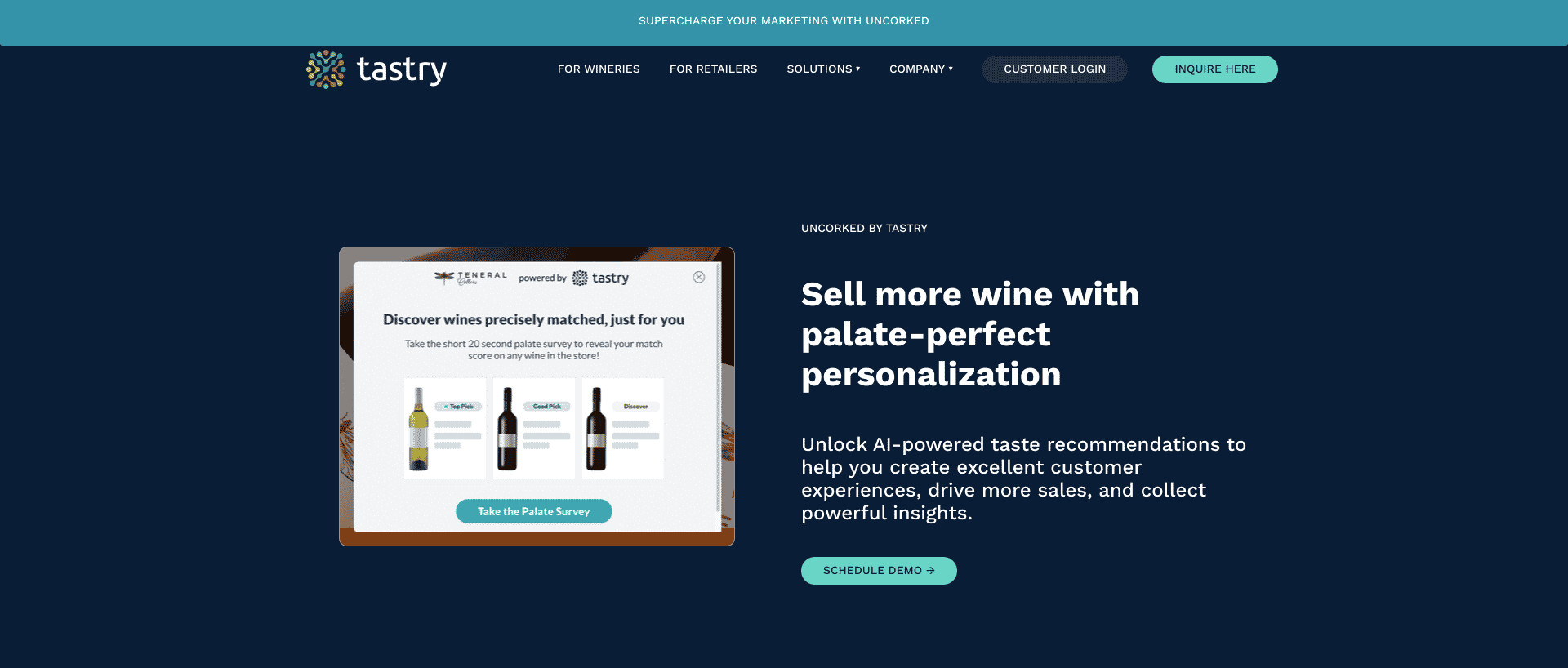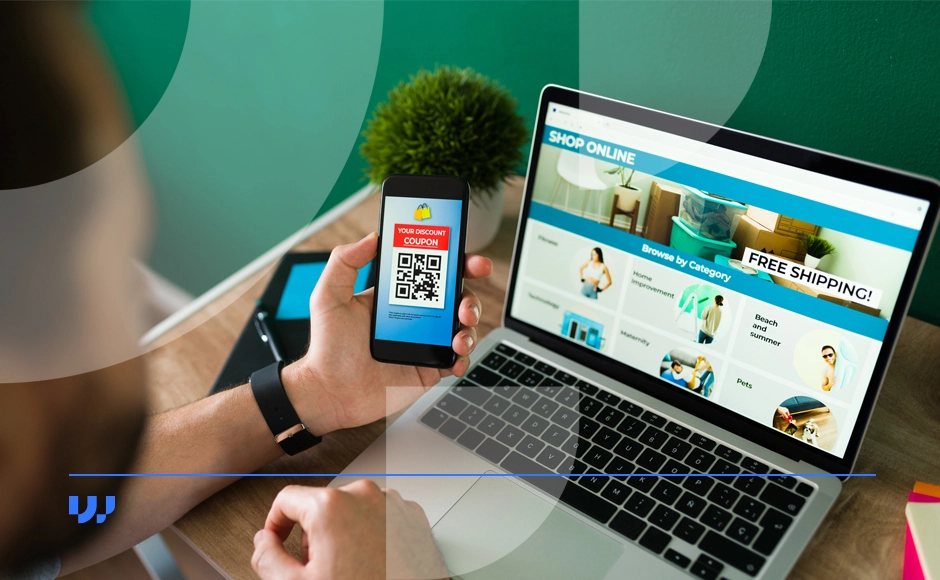Consumers want a more personalized shopping experience than ever before. They want to feel seen and heard. They want content, ads, and chatbot interactions to feel completely tailored to them — not someone like them. In this article, we’ll explore the difference between personalization and hyper-personalization, and look at 10 examples of brands excelling at tailored customer experiences.
10 examples of hyper-personalized marketing
The demand for tailored offerings accelerated during the pandemic. Exposed to hyper-personalized experiences from ecommerce leaders and nimble direct-to-consumer (DTC) start-ups, consumer expectations escalated. Now, if they don’t get the one-to-one experience they’re used to, 44% of consumers say they’re likely to take their business elsewhere.
There’s a lot at stake. Delivering this kind of intimate, hyper-personalized experience not only increases customer retention and strengthens loyalty — it drives revenue growth. According to a recent McKinsey & Company report, companies that excel at personalization generate 40% more revenue than their slower-growing peers.
So what is hyper-personalized marketing, and how can brands harness it to drive business growth?
In this article, we’ll explore the difference between personalization and hyper-personalization, and look at 10 examples of brands excelling at tailored customer experiences.
What’s the difference between hyper-personalized marketing and personalized marketing?
A few years ago, brands could get away with simple personalization. Adding a subscriber’s first name into promotional emails or using retargeting ads to follow people around and remind them of the product they almost purchased.
That basic level of personalization is no longer enough. With consumer retention at stake, brands must go beyond buyer personas that contain baseline demographics. They must utilize AI, machine learning and predictive analytics to pull real-time and behavioral data that delivers an individualized customer experience.
Personalized marketing: Brands have traditionally made marketing campaigns more relevant by using customer data to segment audiences based on shared likes, dislikes, and activities.
The problem with this approach is that it’s not targeted enough. You might have seen this meme circulating online.

Since their demographics are the same, Ozzy Osbourne and Prince Charles would be grouped together in the same customer segment. But can you imagine Ozzy receiving the same messaging as Charles? There’s no way this content would resonate with both of them — and that’s the limitation of traditional personalization.
Hyper-personalized marketing: By using unique customer data like psychographics or real-time engagement with a brand, marketers can present personalized product recommendations or discount codes to a specific individual.
It’s a ‘segment-of-one’ approach that allows brands to target someone with key messages through the most relevant channels to them. Thoughtful touchpoints like sending a ‘how to’ video or checking-in post purchase make consumers feel special.
And when they feel special, they are more likely to repurchase. More than three-quarters of (78%) of consumers will make a repeat purchase and refer friends and family to the brand.
Let’s take a look at the brands delighting their customers and getting ahead of the competition with 10 examples of hyper-personalized marketing.
1. Starbucks
Starbucks excels at hyper-personalization. With the help of AI, the coffee brand uses real-time data to send users unique offers based on their preferences, activity and past purchases. With more than 400,000 variations of hyper-personalized messages to send, coffee lovers always feel as if their communication with the brand is tailor-made.

2. TastryAI
TastryAI partners with wineries to offer customers individualized wine recommendations. Consumers answer a simple 20-second quiz and the winery’s entire retail assortment is ranked and matched to the individual through complex AI systems. The customer then rates and reviews the wine, and TastryAI continues to fine-tune its recommendations.

The founder of TastryAI, Katerina Axelsson, said: ‘One question may be “How do you feel about the smell of fresh-cut grass?” The AI already “knows” which compounds or groups of compounds are responsible for that sensation. When the answer to that question is known, the AI has learned about many compounds you may like or dislike.’
This hyper-personalized approach to wine keeps customers coming back for more. Indeed, those who use Tastry recommendations are 20% less likely to shop at a competitor.
3. Secret Escapes
Travel company Secret Escapes adapts its website based on the keyword a user types and which paid ad they click on.
For example, if someone types the keyword “spa retreats” into Google and clicks on an ad from Secret Escapes with the same heading, they’ll be taken to a personalized landing page. The copy and imagery is updated to reflect their intent.
This level of hyper-personalization led to a 26% increase in sign-ups for the brand.


4. L’Occitane
L’Occitane’s ecommerce team noticed a segment of users in Brazil visiting the website between the hours of 10pm and 5am.
Based on the hypothesis that these people were potentially having trouble sleeping, an overlay appears during these hours showcasing the brand’s pillow mist spray. This product was designed to aid a restful night’s sleep.

5. Thread
UK-based online retailer Thread is a fashion technology brand with a unique proposition. It offers users a free personal stylist who sends weekly emails containing product recommendations based on their preferred styles, body type, budget and feedback on previous pieces.

The online retailer does this by using a machine learning algorithm known as ‘Thimble’. First, stylists go through a pre-screen step where they remove everything from Thread’s partners that they wouldn’t personally recommend. Then, they suggest a few individual items and full outfits — but after that, ‘Thimble’ takes over.
Thread’s hyper-personalized emails elevate the shopping experience and help users overcome the choice paradox they face on most other fashion sites.
6. PetPlate
DTC pet food brand PetPlate includes a colorful, personalized insert welcoming a new customer’s dog to “the PetPlate family”. This insert provides customized feeding instructions, customer service contact information and details on how to receive a discount when you refer a friend.

An example of an insert for a new customer whose dog is named Daisy includes a reference to “her” in the Feeding Guidelines, as well as instructions to feed her 1/2 of an 8-oz container of food two times per day, treats as needed, and two supplements per day. Since including these feeding instructions in first orders, PetPlan has seen a 20% decrease in customer inquiries regarding feeding guidelines.
7. Prose
Personalization begins right at the beginning of the customer journey for DTC custom hair care brand Prose. When a user lands on the website, they’re prompted to fill out an online consultation.
This consultation collects key data around their lifestyle, dietary habits, geographic location, stress levels, and more. From there, using a proprietary algorithm that was built in-house, Prose uses this information to create individualized products that address the shopper’s hair care needs and concerns. Each product comes in a bottle marked with the customer’s name.

8. MandM Direct
Online discount apparel retailer MandM Direct used to rely on standard rules-based recommendations to guide website visitors through the shopper journey.
Since implementing AI-powered product recommendations in 2021, the following changes were made:
- Each customer is shown less items on the homepage — all of which are chosen just for them
- Customers feel ‘seen’ on the product detail page, with specific information provided (color, size, price) that aligns with their preferences
- Personalized product recommendations are made the instant someone adds an item to their basket
Since implementing hyper-personalized product recommendations, MandM Direct has seen a 2.4% increase in overall revenue and 11.4% jump in product recommendation click-through rates.
9. ILIA

Two of the ways beauty brand ILIA increases customer engagement and loyalty is with personalized emails and a branded post-purchase experience.
When a customer makes a purchase they are taken to a shipment tracking page that contains educational videos about how to care for/use their product, shipment FAQs, referral program information and more information about ILIA’s mission. Returning traffic from ILIA’s updated tracking pages converts 25% higher than their site average.
The brand also sends personalized emails letting customers know when it’s time to reorder a product and how long the product lasts on average.
10. Amazon
We couldn’t talk about hyper-personalized marketing without mentioning the undeniable leader of personalization — Amazon.
Every time a customer lands on Amazon’s homepage, it feels as though it’s been designed just for them. This is thanks to an algorithm powered by predictive analytics and item-based collaborative filtering. Collaborative filtering looks through a user’s purchased items and the purchase histories of other people who bought the same product to provide “frequently bought together” information on their product listings.
But collaborative filtering doesn’t stop there. Amazon goes one step further by connecting purchase history with browsing data. If a user buys a dog chew, Amazon won’t just suggest dog chews in the future. Its algorithm might look at their browsing history, see that they watch Pixar films on Prime, and recommend Toy Story-themed dog toys in the future. This recommendation engine is responsible for 35% of Amazon’s total revenue.
The last thing we had to mention was Amazon’s hyper-personalized email marketing strategy. If you stop searching for a product on their site, you’re likely to receive an email shortly afterwards with relevant product recommendations.
Amazon uses data including a user’s name, search query, average time spent searching, past purchase history, average spend amount, and brand affinity to create a curated selection of products that they’re most likely to buy.

How can Digital Asset Management (DAM) power hyper-personalized marketing?
In order to provide hyper-personalized experiences to customers, businesses not only need access to data — they need content. A lot of it. But creating and deploying hundreds of variations of an asset manually is a huge undertaking.
That’s why switching from a manual personalization strategy to a programmatic one is essential. With a DAM platform, businesses can streamline the production and management of content all in one central hub.
This, coupled with Media Delivery and Digital Experience, enables organizations to automatically adapt content based on user context and behavior. That means no more time wasted on tedious, manual tasks like changing the background color or adding subtitles to multiple assets.
Ready to elevate your customer experience with hyper-personalized marketing?
Book a free demo to learn more about how DAM and Media Delivery and Digital Experience can help you achieve better customer outcomes and drive revenue growth.






